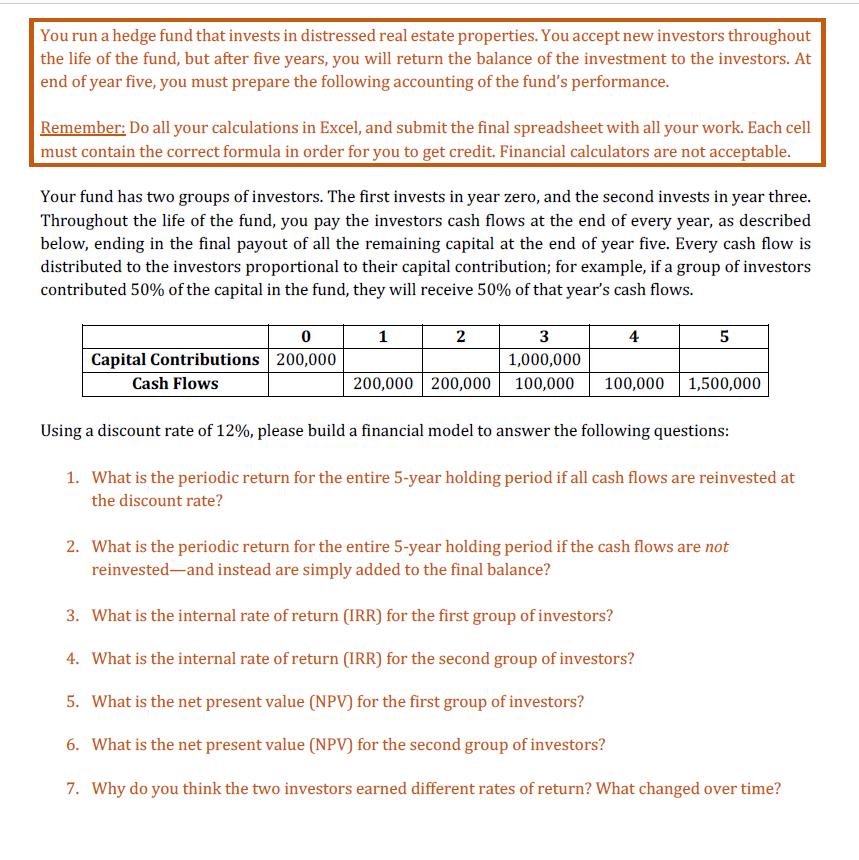Answered step by step
Verified Expert Solution
Question
1 Approved Answer
You run a hedge fund that invests in distressed real estate properties. You accept new investors throughout the life of the fund, but after

You run a hedge fund that invests in distressed real estate properties. You accept new investors throughout the life of the fund, but after five years, you will return the balance of the investment to the investors. At end of year five, you must prepare the following accounting of the fund's performance. Remember: Do all your calculations in Excel, and submit the final spreadsheet with all your work. Each cell must contain the correct formula in order for you to get credit. Financial calculators are not acceptable. Your fund has two groups of investors. The first invests in year zero, and the second invests in year three. Throughout the life of the fund, you pay the investors cash flows at the end of every year, as described below, ending in the final payout of all the remaining capital at the end of year five. Every cash flow is distributed to the investors proportional to their capital contribution; for example, if a group of investors contributed 50% of the capital in the fund, they will receive 50% of that year's cash flows. 1 2 4 Capital Contributions 200,000 1,000,000 Cash Flows 200,000 200,000 100,000 100,000 1,500,000 Using a discount rate of 12%, please build a financial model to answer the following questions: 1. What is the periodic return for the entire 5-year holding period if all cash flows are reinvested at the discount rate? 2. What is the periodic return for the entire 5-year holding period if the cash flows are not reinvested-and instead are simply added to the final balance? 3. What is the internal rate of return (IRR) for the first group of investors? 4. What is the internal rate of return (IRR) for the second group of investors? 5. What is the net present value (NPV) for the first group of investors? 6. What is the net present value (NPV) for the second group of investors? 7. Why do you think the two investors earned different rates of return? What changed over time?
Step by Step Solution
There are 3 Steps involved in it
Step: 1

Get Instant Access to Expert-Tailored Solutions
See step-by-step solutions with expert insights and AI powered tools for academic success
Step: 2

Step: 3

Ace Your Homework with AI
Get the answers you need in no time with our AI-driven, step-by-step assistance
Get Started


